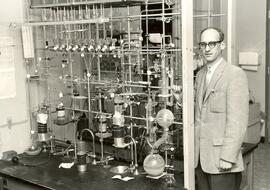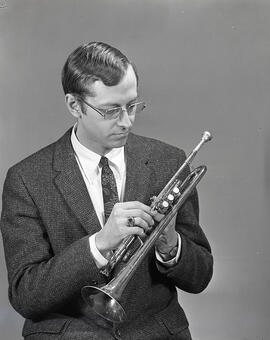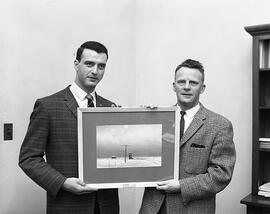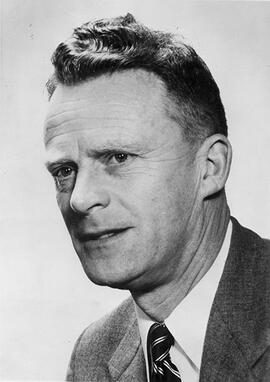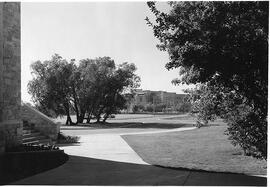Head and shoulders portrait of Arthur J. Porter, dean of Engineering.
Bio/Historical Note: Arthur J. Porter was born in 1910 in Ulverston, England. While studying at the University of Manchester, Porter helped build a differential analyzer - one of the world’s first analog computers, using a Mecanno construction set. In 1937 he accepted a fellowship at the Massachusetts Institute of Technology (MIT). Porter helped build the Rockefeller differential analyser - the most ambitious analog/digital computer built to date. It was used extensively for projects during World War II. In 1949 Porter accepted a position with Ferranti Canada and worked on the DATAR system. DATAR combined data from a convoy of ships’ sensors, providing a single ‘overall view’ that allowed the commander to make better-informed decisions. Soon afterwards, in the early 1950s, Porter was one of six Canadians selected to work on Project Lamp Light; working on data processing expertise was crucial to this top-secret North American air defence initiative. In 1958 Porter became the fourth dean of Engineering at the University of Saskatchewan. There, along with Norman Moody and Dr. William Feindel, Porter established Canada’s first biomedical research program. In 1962 Porter moved to the University of Toronto to chair their new Industrial engineering department - one of the first in the world. While there, Porter also helped establish the University’s biomedical program. During the late 1960s he was involved in projects that bridged the gap between culture and science. He was the first acting director of the University of Toronto’s Centre for Culture and Technology. Porter also chaired the Science and Technology Advisory Committee when Montreal hosted the World’s Fair-Expo 67. Porter died in 2010 in Winston-Salem, North Carolina at age 99.

